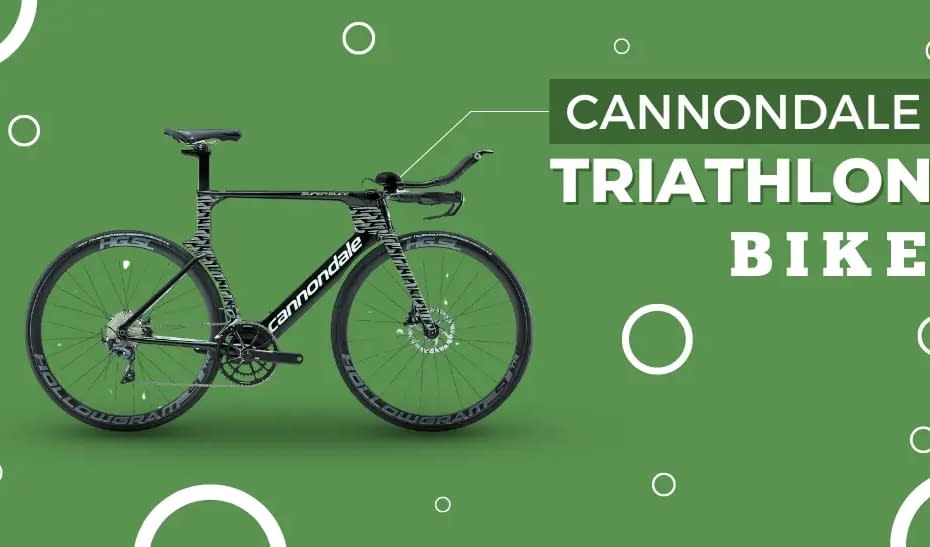Cannondale is undoubtedly one of the top global brands when it comes to pushing the limits of speed and performance. Their triathlon bikes are synonymous with innovation, aerodynamics, and pure, unadulterated speed. Welcome to the exciting world of Cannondale triathlon bikes and the details that make these wheels spin and become popular among triathletes of all levels.
The Cannondale Legacy: A Brief Historical Overview
Before we delve into the details of Cannondale triathlon bikes, let’s take a brief look at their history. Cannondale has been rocking the bike industry since the early 1970s, pioneering the use of aluminum frames when everyone else was using steel. Fast forward to today, and they continue to innovate, especially in the triathlon arena. Zack and Paul continue to push the boundaries, setting new records in triathlon events.
The Anatomy of a Cannondale Triathlon Bike
Frame Design:
Cannondale’s motto, “Heart of Speed,” isn’t just about building bikes; it’s about engineering speed. Their triathlon frames are some of the stiffest and most aerodynamic in the industry, cutting through the air effortlessly.
- Truncated Airfoil Tubing: Cheats the wind without sacrificing stiffness.
- TAP (Truncated Aero Profile): Optimizes aerodynamics across a wide range of yaw angles.
- Integrated Storage: Who said you can’t have your cake and eat it too?
Geometry:
The Cannondale triathlon bike is designed to provide the perfect geometry for power output while minimizing frontal area.
- Steep Seat Tube Angle: Puts you in an aggressive, aero position.
- Low Stack Height: Allows for a more aerodynamic riding position.
- Adjustable Fit: Because everyone is different.
Components:
Cannondale doesn’t skimp on components. Every Cannondale triathlon bike features a top-notch drivetrain, wheelset, and parts, from hydraulic disc brakes for superior control to smooth-rolling hubs.
- High-End Groupsets: Often Shimano or SRAM, depending on the model.
- Aero Wheelsets: Deep-section wheels for maximum speed.
- Integrated Brakes: Hidden away to minimize drag.
The Cannondale Triathlon Bike Lineup
Cannondale offers several triathlon bike models for various needs and budgets. Let’s take a look at some of their standout models:
Cannondale SuperSlice
This is Cannondale’s flagship triathlon bike, the Ferrari of the cycling world. It’s a beautiful machine, but one undeniably built for speed.
Pros:
- Incredibly aerodynamic
- Stiff frame for optimal power transfer
- Integrated storage solutions
Cons:
- High price point
- Aggressive position may not be suitable for all riders
- Cannondale Slice
Cannondale’s second-tier triathlon bike
It’s still incredibly fast but offers a slightly more adjustable fit.
Pros:
- More adjustable fit
- Higher performance-to-price ratio
- More suitable for a wider range of triathletes
Cons:
- Slightly less aerodynamic than the SuperSlice
- Fewer integrated features
Features Found on All Cannondale Triathlon Bikes
- SAVE Micro-Suspension: For improved handling and comfort.
- BB30A Bottom Bracket: Oversized for maximum power transfer.
- Di2 Integration: For electronic shifting (optional).
- HollowGram Cranksets: Lightweight yet stiff for efficient pedaling.
Pricing: What to Expect
The pricing of Cannondale triathlon bikes ranges from relatively affordable (a month’s worth of ramen) to eye-watering (time to call the bank).
- Entry-Level: Around $2,000-$3,500
- Mid-Range: $4,000-$6,000
- High-End: $7,000-$12,000+
Keep in mind that you’re not just paying for a bike; you’re paying for speed, technology, and years of engineering.
The Pros and Cons of Buying a Cannondale Triathlon Bike
Pros:
- Cutting-edge aerodynamic technology
- Extremely durable construction
- Wide range of options for different budgets
- High prestige among triathletes
Cons:
- More expensive than some competitors
- Aggressive geometry may not suit everyone
- Can be overkill for beginners or casual triathletes
Who Should Ride a Cannondale Triathlon Bike?
- Serious triathletes looking to shave seconds off their time
- Those who appreciate advanced technology and engineering
- Aerodynamic and powerful riders who prioritize speed
If you’re new to triathlon or prefer a more relaxed riding position, you might want to consider Cannondale’s road bikes.
The Future of Cannondale Triathlon Bikes
As a forward-thinking company, the future of Cannondale triathlon bikes is bright. Expect to see even more integration, increased use of carbon fiber, and perhaps even real-time AI tuning.
Conclusion
A Cannondale triathlon bike is more than just a bike; it’s a statement. It’s Cannondale saying, “This is what we can do.” Whether you’re a competitive racer or a weekend warrior, these bikes offer a glimpse of what’s possible when speed meets innovation.
Are they for everyone? Probably not. But for those who crave speed and high-tech performance, the Cannondale triathlon bike is the ultimate reward. Remember, no matter how advanced your gear, it’s useless without training. So, whether you’re on a brand-new SuperSlice or an older road bike, the most important thing is to ride.
FAQ
Can I change components on a Cannondale triathlon bike?
Absolutely! These bikes are mostly compatible with standard bike parts, so you can customize them to your liking. Just remember that some components are designed specifically for triathlon bikes, so not every road bike part will fit.
How does the Cannondale triathlon bike handle in crosswinds?
Like many tri bikes, they can be a bit tricky in strong crosswinds due to their deep-section wheels and aero tubes. However, with practice, you can learn to handle it like a pro.
